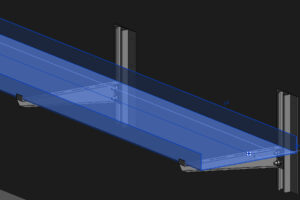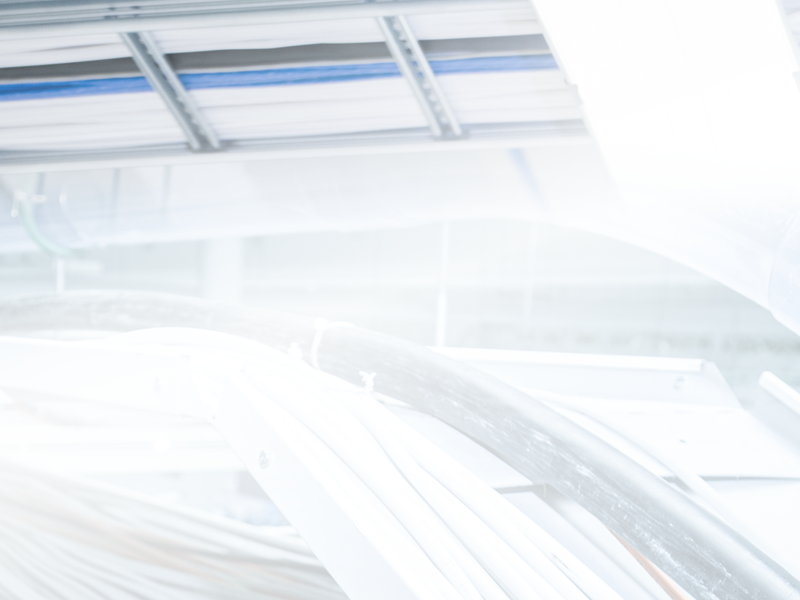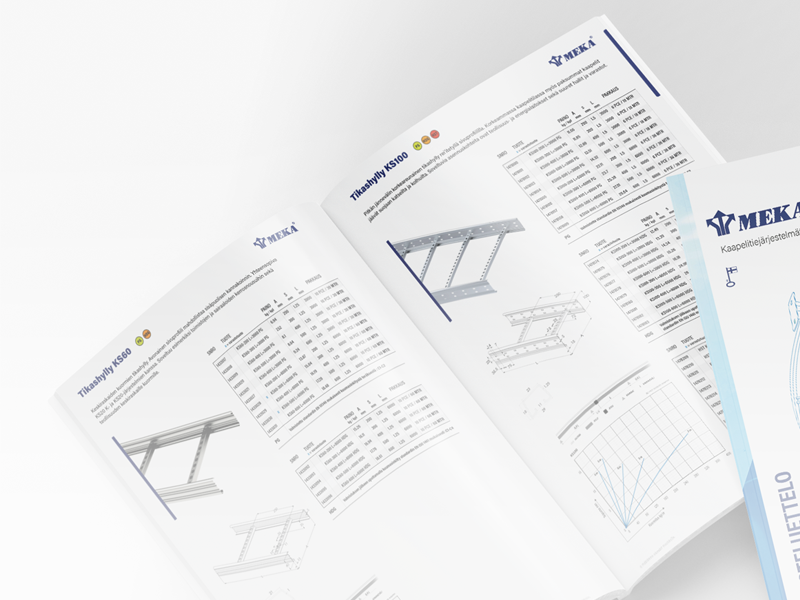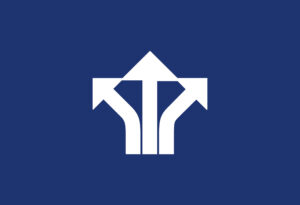
Using carbon footprint for lower emissions
The green transition is here and it presents huge opportunities for our industry. Meka has determined its carbon footprint for 2021, because it is important for us to monitor our environmental impact. We also want to respond to the demand from customers regarding the environmental efficiency of the organization. Meka also has products and tools to help its customers towards a carbon-neutral future.
Meka Pro carbon footprint
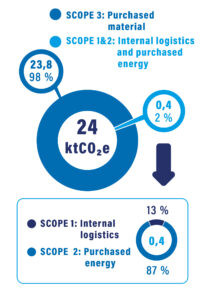
Meka Pro’s carbon footprint has been calculated using AFRY’s carbon footprint determination according to the GHG protocol. AFRY is one of Europe’s leading design and consulting companies that wants to speed up the change towards a sustainable society. In the calculation according to the GHG protocol, carbon dioxide emissions are divided into three Scope categories:
Scope 1 – emissions are generated on site as a result of the company’s own operations.
Scope 2 – category are the indirect emissions of production from, for example, electricity and heat.
Scope 3 – category includes indirect emissions from the end use of products and the procurement of goods, incl. raw material procurement and logistics.
Meka Pro’s annual carbon footprint in 2021 was 24 kilotons of CO₂e. Most of the emissions (23 ktCO₂e) came from purchased materials. The next most significant emissions were caused by outbound transport (0.3 ktCO₂e) and purchased electricity (approx. 0.3 ktCO₂e).
In the case of Meka Pro, the emissions of the Scope 3 category are the largest, because the raw materials alone account for 96.5% of the carbon dioxide emissions. Fortunately, steel is 100% recyclable and fossil-free steel is also on the horizon.
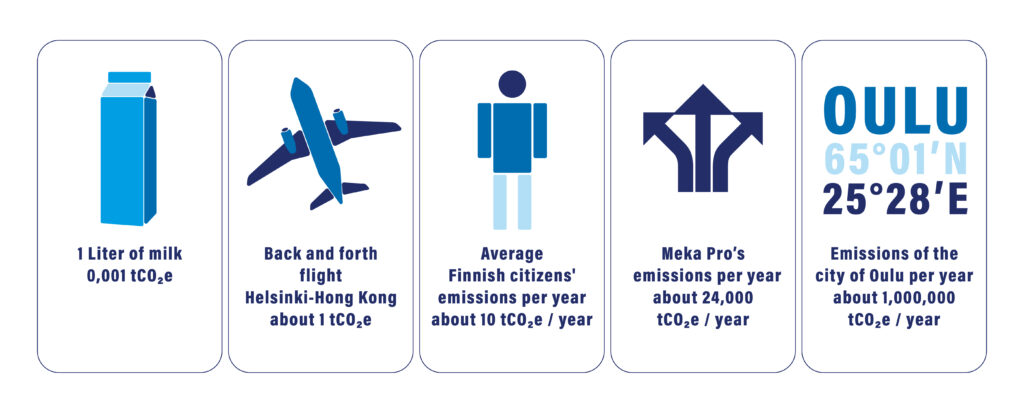
We are reducing our carbon footprint
The report offers us clear ways in which we can act to improve our carbon footprint. Meka makes its products almost entirely from recyclable raw materials, and most of our emissions come from the materials we buy. In the future, investment in the use of new carbon-free materials (especially steel and aluminum) will enable a smaller carbon footprint, as long as these materials are available. Changing the type of electricity to renewable electricity also reduces our emissions. The latest investment in renewable electricity was the solar panels on the roof of our new addition.
Carbon footprint of all Meka Pro products available
The product-specific carbon footprint helps Meka Pro and customers manage the size of the carbon footprint both in their own operations and on construction sites. Meka Pro offers products optimized for the intended use, which can be used to safely reduce the carbon footprint without compromising the requirements of the final destination.
Examples of product-specific carbon footprint

The carbon dioxide emission of the cable ladder KS20-300 K L=6000 PG is 22 kg, of which the raw material’s share is 21 kg. The load capacity of the KS20 K cable ladder is 45 kg/m at a span of 3 meters.

The carbon dioxide emission of the cable ladder KS20-300 L=6000 PG is 31 kg, of which the raw material’s share is 30 kg. The load capacity of the KS20 cable ladder is 75 kg/m at a span of 3 meters.
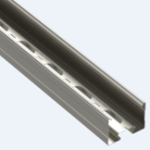
The carbon dioxide emission of the MEK 70 S L=6000 PG lighting suspension rail is 11.7 kg, of which the raw material’s share is 11.2 kg. The MEK S lighting rail has a load capacity of 17.5 kg/m at a span of 3 meters.

The carbon dioxide emission of the lighting suspension rail MEK 70 L=6000 PG is 23.4 kg, of which the raw material’s share is 22.6 kg. The load-bearing capacity of the MEK lighting rail is 43 kg/m at a span of 3 meters.
Three tips for a smaller carbon footprint
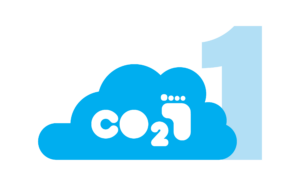
Sizing and optimization
At the moment, the most important way for our customers to reduce their carbon footprint is to measure and optimize cable support systems to fit each destination perfectly.
Lighter products not only reduce the carbon footprint, but also lower costs. Our sales team and experts know how to help in choosing solutions and products. As far as we know, we are the only cable support system supplier that has certified measurement results in accordance with the IEC 61537 cable support standard, which means that we can confidently choose the best option for each target – safely and cost-effectively.
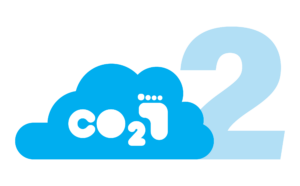
BIM design programs
BIM design programs are becoming increasingly common in building design and electrical design. With the help of BIM modeling, design and construction costs can be significantly reduced and they help all parties to take into account the carbon footprint of construction and the building already in the design phase. Meka already offers BIM models of its products in Autodesk REVIT and AVEVA E3D programs and is currently expanding its BIM modeled product range. Meka is also a pioneer in BIM modeling in the sense that Meka’s support systems are also fully BIM-modelled, and thus planning and implementation are significantly easier when both Cableways and support systems can be planned in detail and efficiently at the same time and with the same system.
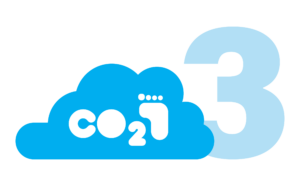
Responsible supplier
During this year, Meka will decide on measuring the carbon footprint of all its products and provide the customer with information on the carbon footprint of each product, object and offer. We strongly believe that measurement achieves results when builders and contractors can consciously make decisions that can promote carbon neutrality.

